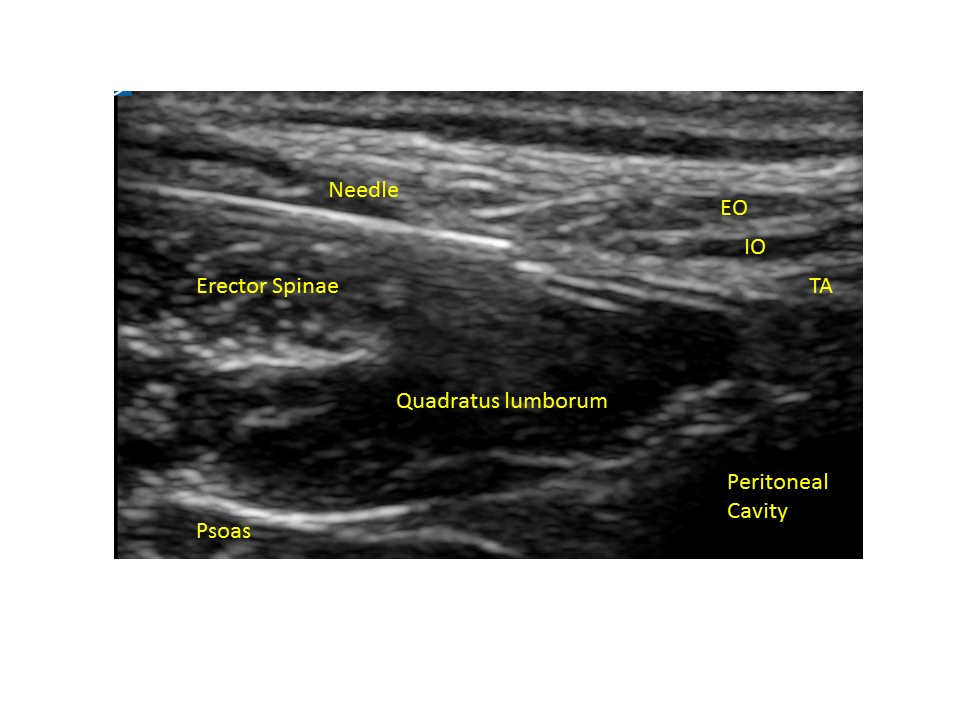PR2-171
Ultrasound-Guided Quadratus Lumborum Block for postoperative analgesia in a 10 month old with Epidermolysis Bullosa and Chronic pain
Nguyen K, Ng A
Baylor College of Medicine, Texas Children's. Hospital, Houston, TX, USA
Introduction:
The anesthetic management of children with epidermolysis bullosa (EB) can present an array of unique challenges to the perioperative team including difficult airway and pain management. The skin care of EB patients involves daily painful interventions and regular use of opioids. Although quadratus lumborum block has been used for adult patients, it has only been recently described for postoperative analgesia in pediatric patients. We report the use of ultrasound-guided quadratus lumborum (QL) block for postoperative analgesia in a 10 month old with recessive dystrophic EB and chronic pain.
Case Report:
The 7.8 kg 10 month old infant presented for open gastrostomy tube placement and circumcision. Past medical history included recessive dystrophic EB, reflux, chronic pain, and failure to thrive. Chronic pain medications required for daily painful procedures included oxycodone, gabapentin, ibuprofen, and midazolam. Special skin precautions were used to secure peripheral IV access and airway was obtained using a video laryngoscope. Intravenous Tylenol 80 mg, ketorolac 4 mg, and hydromorphone 400 micrograms (mcg) were given for analgesia during the case. At the end of the procedures, the patient was placed in the lateral position for placement of ultrasound guided QL block. Bilateral QL 2 blocks were performed using 5 mL of 0.2 % ropivacaine deposited posteriorly to the QL on each side. Due to open bullous wounds on the anterior and lateral aspects of the abdomen, the needle trajectory was altered from the routine anterior-posterior approach to a posterior-anterior approach, piercing through the erector spinae muscles. FLACC (Face, legs, activity, cry, consolability) pain scores postoperatively were 0 at 1 hour, 0 at 2 hours, 0 at 4 hours, 3 at 8 hours, 0 at 12 hours, and 5 at 16 hours. No intravenous (IV) rescue medications were required. Analgesic duration of the block was estimated to be 17 hours.
Discussion:
Quadratus lumborum block may be an effective analgesia option and has been shown to reduce morphine consumption for abdominal surgery in adult patients. We report one of the youngest cases of ultrasound guided quadratus lumborum block in a pediatric patient. Particularly challenging is the size of the patient as well as the needle position in a posterior-anterior trajectory due to open bullous abdominal wounds of various stages of healing. We demonstrate that the QL block can be performed in young infants, improving patient pain scores and reducing postoperative pain medications.
References:
Blanco, R. et al. “Quadratus lumborum block versus transversus abdominal plane block for postoperative pain after cesarean delivery.†Regional anesthesia and Pain Medicine. 2016. 41(6): 757- 761.
Chakraborty, A. et al. “Ultrasound guided continuous quadratus lumborum block for postoperative analgesia in a pediatric patient.†Anesthesia and Analgesia. 2015. 4(3): 34-36.
Top












